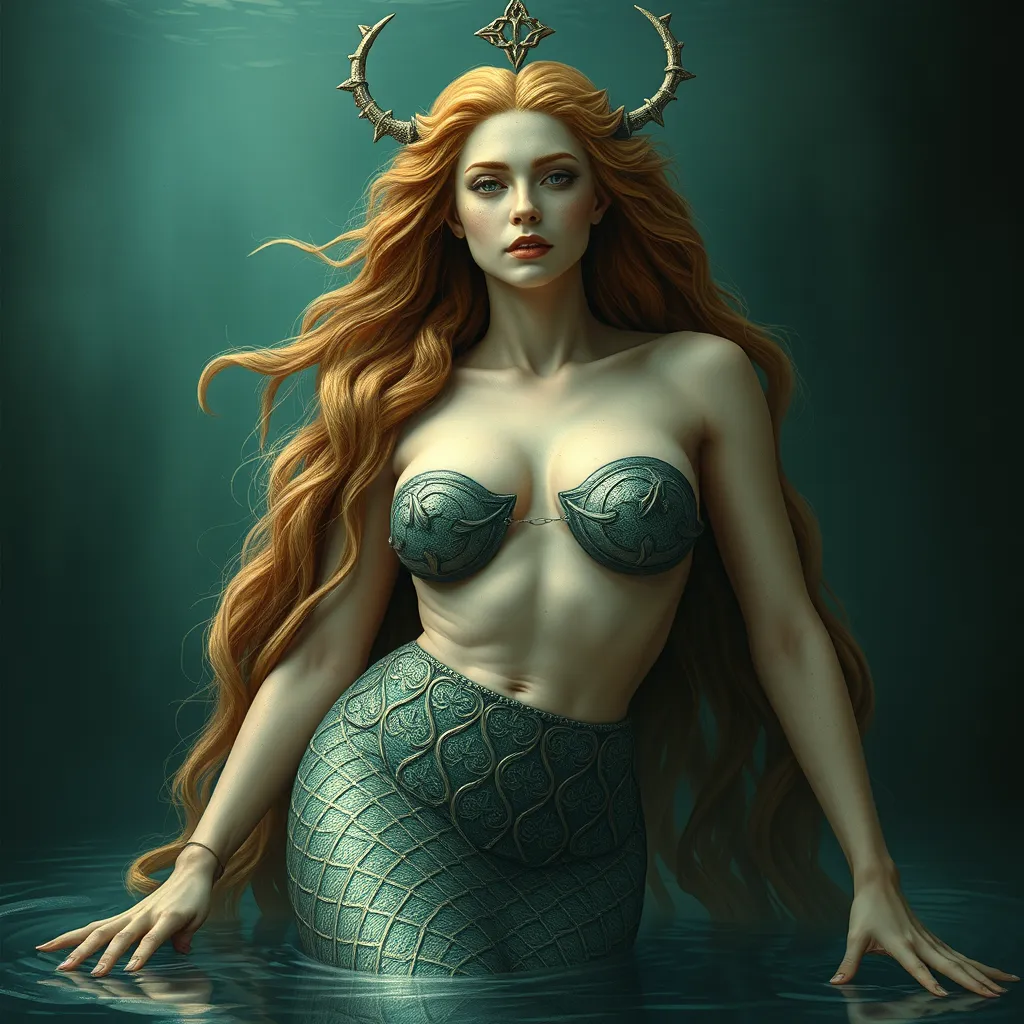Beyond the Mermaid: Deconstructing the Celtic Siren’s Transformation from Sea Creature to Humanoid
I. Introduction
The Celtic siren, often overshadowed by the more popular mermaid mythos, serves as a fascinating subject of study in folklore. These enchanting beings, known for their haunting songs and ethereal beauty, were once considered dangerous creatures of the sea. This article seeks to explore the cultural transformation of the Celtic siren, tracing its evolution from a formidable sea creature to a more humanoid figure in popular narratives.
Understanding this transformation is crucial as it reveals the layers of meaning and symbolism embedded in folklore. By examining how the siren’s portrayal has changed over time, we can gain insights into societal values, cultural exchanges, and the interplay between nature and humanity.
II. Historical Origins of the Celtic Siren
The origins of the Celtic siren can be traced back to ancient Celtic mythology, where these beings were often depicted as half-woman, half-bird, with enchanting voices that lured sailors to their doom. The characteristics of these sirens were deeply intertwined with the natural world, reflecting the Celts’ reverence for the sea and its mysteries.
- Early Depictions: Sirens were depicted as frightening and alluring, often associated with storms and shipwrecks.
- Links to Other Mythologies: Similar figures exist in various cultures, such as the Greek sirens, who were also known for their deadly songs.
In Celtic society, the siren symbolized both the beauty and danger of the ocean, representing the duality of nature. Their songs were seen as a call to adventure, yet also a warning of the peril that lay ahead.
III. The Mermaid Myth: A Comparative Analysis
While both mermaids and Celtic sirens share similarities, particularly in their aquatic origins, they differ significantly in their portrayals and cultural contexts. Mermaids are often depicted as benevolent or romantic figures, while Celtic sirens retain a more ominous essence.
- Similarities:
- Both are beautiful and enchanting.
- Both have the ability to lure humans.
- Differences:
- Celtic sirens are often seen as dangerous, while mermaids are more often portrayed as nurturing.
- Mermaids are frequently romanticized in literature and film, whereas sirens maintain a more complex and darker narrative.
The evolution of mermaid imagery through art and literature has been shaped by cultural influences, including the rise of romanticism and the idealization of femininity, which contrasts with the siren’s more ambiguous role.
IV. Transformation from Sea Creature to Humanoid
Over time, the depiction of sirens has transformed significantly, particularly in literature and art. Several key representations illustrate this shift:
- Literary Works: Texts such as The Fisherman and His Soul by Oscar Wilde show sirens as more human-like figures, emphasizing emotional connections.
- Artistic Representations: Artists like John William Waterhouse have depicted sirens with a blend of human and mystical traits, highlighting their allure and danger.
Psychological factors also play a role in this transformation. The siren’s shift from a fearsome creature to a more relatable humanoid reflects changing societal attitudes towards femininity and sexuality.
The advent of Christianity further influenced the portrayal of sirens, often demonizing their allure and associating them with temptation and sin. This shift marked a significant cultural recontextualization of the siren figure.
V. The Siren in Modern Popular Culture
Today, the siren has been reimagined in various forms of media, from films to literature and music. Contemporary interpretations often juxtapose traditional elements with modern sensibilities.
- Film: Movies like The Shape of Water explore the siren mythos in new, complex ways, emphasizing themes of love and acceptance.
- Literature: Works such as The Mermaid by Christina Henry present sirens as multifaceted characters with depth beyond their alluring appearances.
Modern narratives reflect evolving societal values, particularly regarding gender roles and the reclamation of female agency. The transformation of the siren from a malevolent figure to one of empowerment speaks to broader cultural shifts.
VI. The Symbolism of the Siren in Feminist Discourse
The siren has increasingly become a symbol of feminine power and sexuality within feminist discourse. This transformation is noteworthy for several reasons:
- Feminine Power: The siren embodies a form of power that challenges patriarchal narratives, often using her voice to assert agency.
- Patriarchal Critique: Traditional portrayals often depict sirens as dangerous seductresses, reflecting societal fears of female sexuality.
- Reclamation: Contemporary feminist literature and art have reclaimed the siren figure, portraying her as a symbol of strength and resilience.
This reclamation reflects a desire to redefine feminine identity, moving away from the confines of traditional narratives that often diminish women’s roles.
VII. The Role of Environmentalism in Siren Narratives
As ecological concerns have risen to prominence, the siren’s aquatic origins have been reexamined in relation to contemporary environmental issues. The siren serves as a powerful metaphor for the relationship between humanity and nature.
- Ecological Connections: Sirens, as guardians of the sea, symbolize the fragility of marine ecosystems and the need for conservation.
- Human-Nature Relationship: The siren’s dual nature reflects humanity’s complex relationship with the natural world, encompassing both beauty and destruction.
Modern works, such as The Ocean at the End of the Lane by Neil Gaiman, intertwine siren lore with ecological themes, calling attention to the urgent need for environmental stewardship.
VIII. Conclusion
The transformation of the Celtic siren from a formidable sea creature to a more humanoid figure illustrates the dynamic nature of cultural narratives. This evolution reflects broader societal changes, including shifts in gender roles, environmental awareness, and the reclamation of female identity.
Understanding these transformations not only enriches our appreciation of folklore but also highlights the importance of cultural narratives in shaping our perceptions of the world. Future research may continue to explore the siren’s multifaceted symbolism, revealing new insights into the intersection of myth, culture, and contemporary society.




